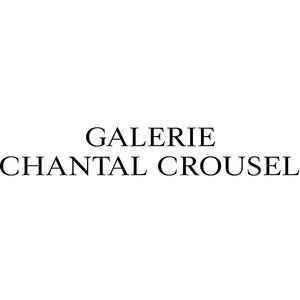La Señora de Las Nueces
January 23–February 27, 2021
10 rue Charlot
75003 Paris
France
Hours: Tuesday–Friday 10am–6pm,
Saturday 11am–7pm
T +33 1 42 77 38 87
galerie@crousel.com
Galerie Chantal Crousel is pleased to host the fifth Abraham Cruzvillegas solo exhibition La Señora de Las Nueces. The works presented are the result of a long term reflection about the material and cultural history of the Señor de las Limas, a sculpture dating back to 900–400 BCE, emblematic of Olmec culture.(1) Found in 1965 by two children from Las Limas village looking for a stone with which to crack a nut from a palm, the sculpture represents a person sitting cross-legged with the loose body of a were-jaguar baby laying over his arms.(2) The back of the sculpture is flat, at the lower half of which are two symmetrical holes which seem designed for passing a rope through to facilitate its transport.
The uncertainty in the hypotheses put forward as to the usage and symbolism of the Señor de Las Limas, as well as the conditions of its discovery and the veneration it inspired prior to inclusion in the Xalapa museum of anthropology’s collection are a starting-point for understanding the works of Cruzvillegas shown here. Entitled La Señora de Las Nueces, a video in the exhibition shows the close-up of a woman’s hand—archeologist Patricia Carot, specialist in pre-Columbian Purepecha culture—using two stones to break a nut, then peeling it. The almost instinctive familiarity of gestures allowing the fruit to be opened is like a replay of the original discovery of the Olmec sculpture in the 1960s. Recorded by the artist, the short clip of the archeologist’s hand in action focuses the viewer’s attention on her movements.
Attention to movement is central to Cruzvillegas’ process of creating the hanging sculptures in the main gallery. Made from urban objets trouvés and materials picked up around the city, they are all put together to be carried and carry something else. Based on scientific proposals as to the transportation techniques the Olmecs used for the Señor de Las Limas and its symbolic function, Cruzvillegas completes his sculptures by a hybrid activity: strapped to his body, he embarks each one on a journey between the gallery and a place of personal importance in this day-to-day life. Brought back to the gallery, they signify the end of a series of performances in which the artist attended to his serendipitous encounters with the fragments picked out of the urban fabric. Creating the sculptures in part expresses a quest to understand the body as tool. The question of the relation between the body and the work of art is fundamental to Cruzvillegas’ thinking.
Made in the weeks leading up to the exhibition’s opening, the monoprints attached to the gallery walls consist in colorful abstract motifs. Made on a mirror, each drawings is transferred onto paper, then attached by means of beer capsules onto a plain wooden frame, with no protective glass. The capsules are thus used as ligatures between the materials representing the sculptures mentioned earlier. In this series of works on paper entitled On the road of La Señora de Las Nueces, the body is involved once again not just by the printing technique, by its physicality, but also by the reflection of himself in the mirror, now transfigured into medium. For Cruzvillegas, the painted shapes of the monoprints represent a sort of projection of the sculptures prior to their creation.
(1) The Olmec were a multiethnic, pre-Columbian people established on the coast of the Gulf of Mexico, in the Valley of Mexico and along the Pacific coastline down to present-day Salvador. Their presence in the region ranged from 2500 to 500 BCE and was revealed in the mid-19th century by the discovery of a colossal head, sculpted from basalt, on the now archeological site of Tres Zapotes in the state of Veracruz.
(2) Hybrid figures are part of the sculptural repertory of Olmec art, the werejaguar is a recurrent example of which.










